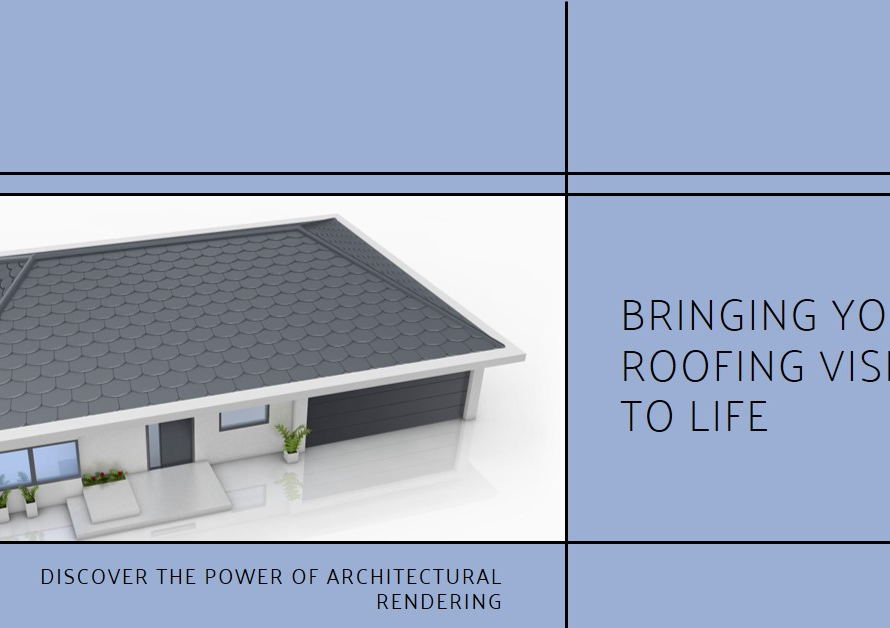
Table of Contents
What is Architectural Acoustics?
Architectural acoustics is the branch of science that deals with how sound behaves within a space. It focuses on creating environments that are conducive to optimal sound quality and communication. This field has gained importance not only in music halls and theaters but also in office spaces, schools, hospitals, and even private residences.
One key aspect of architectural acoustics is designing spaces that minimize reflections and echoes. This involves strategically placing materials such as acoustic panels or wall coverings to absorb sound waves rather than allowing them to bounce around and create unwanted noise. Additionally, the placement of speakers, microphones, and other audio equipment must be carefully considered to maximize their efficiency without causing interference or distortion.
Another critical factor in architectural acoustics is understanding the impact of noise control on human health and well-being. Studies have shown that excessive noise can lead to stress, sleep disturbances, impaired cognitive function, and even cardiovascular issues. Therefore, architects must incorporate measures such as soundproofing materials, adequate insulation against external noise sources like traffic or machinery vibrations.
In conclusion, architectural acoustics plays a vital role in creating pleasant environments where sound is optimized for various purposes – from enjoying music performances to ensuring effective communication in workspaces or learning environments. By considering factors like reflection control and noise reduction techniques during design processes, architects can greatly enhance the overall experience for occupants while minimizing potential negative impacts on their health and well-being.
Definition: Understanding the science of sound.
Understanding the science of sound is crucial in the field of architectural acoustics. Sound is a form of energy that travels in waves through various mediums, such as air, water, or solid objects. These waves have specific properties that determine how we perceive them, including their frequency, amplitude, and wavelength.
Frequency refers to the number of cycles a sound wave completes per second and is measured in hertz (Hz). Different frequencies produce different pitches; for example, higher frequencies are perceived as high-pitched sounds like a bird chirping or a whistle blowing, while lower frequencies are associated with deeper tones such as thunder or a bass drum.
Amplitude refers to the intensity or volume of sound and is measured in decibels (dB). It determines how loud or soft a sound appears to us. The human hearing range typically goes from 0 dB (threshold of hearing) to around 130 dB (threshold of pain), with conversations falling between 40-60 dB and rock concerts reaching well over 100 dB.
Wavelength refers to the distance between two consecutive points on a sound wave. It affects how sounds interact with their surroundings and can play a significant role in architectural acoustics. Longer wavelengths correspond to lower frequencies and vice versa.
By understanding these fundamental aspects of sound waves, architects can optimize building design for desired acoustic outcomes. From avoiding unwanted echoes by strategically placing absorptive materials to enhancing speech intelligibility through proper reverberation control techniques
Importance: Enhancing sound quality in built environments.
In the realm of architectural design, sound quality is often overlooked or underestimated. However, it plays a vital role in creating comfortable and functional built environments. Enhancing sound quality in these spaces not only improves the overall ambiance but also has a direct impact on communication, productivity, and well-being.
One important aspect of enhancing sound quality is through proper insulation and acoustic treatments. By minimizing unwanted noise from external sources such as traffic or construction activities, occupants can enjoy a quieter and more peaceful environment. Additionally, incorporating acoustic treatments such as absorption panels or diffusers can help reduce echo and reverberation within a space, enabling clear communication and minimizing distractions.
Furthermore, by considering sound insulation when designing buildings, architects can create spaces that support productivity and concentration. Whether it’s an open office or a classroom setting, excessive noise levels can negatively affect our ability to focus on tasks at hand. High-quality acoustics allow for better speech intelligibility while reducing background noises that can impede concentration.
Overall, paying attention to enhancing sound quality in built environments is crucial for creating spaces where people feel comfortable and are able to communicate effectively. By considering acoustic solutions during the design phase of a project, architects have the power to shape environments that enhance both functionality and well-being.
Factors: Materials, design, and layout affecting acoustics.
When it comes to architectural acoustics, there are several factors that play a crucial role in determining the sound quality of a space. One such factor is the choice of materials used in construction. Hard, reflective surfaces like concrete and glass can create excessive reverberation, resulting in poor sound clarity and intelligibility. On the other hand, soft materials like curtains and acoustic panels can absorb sound waves, reducing echo and improving speech comprehension.
Another important aspect is the design of the space itself. The overall layout, shape, and arrangement of objects can have a significant impact on the acoustics. For instance, irregularly shaped rooms with multiple angles can cause sound waves to scatter unpredictably, causing unwanted reflections. Strategic placement of speakers and microphones can also help optimize sound distribution.
Lastly, the layout of a space plays a vital role in its acoustic performance. The positioning and arrangement of seats or audience areas in relation to the stage or speaker system can influence how well sound is transmitted throughout the room. Additionally, proper ventilation systems need to be taken into consideration as they must not interfere with sound quality.
In summary, when considering architectural acoustics, it is essential to take into account factors such as material selection for building elements which affect reverberation control; design considerations that minimize unwanted reflections; and smart layout planning that optimizes sound transmission for an immersive auditory experience
Applications: Concert halls, theaters, offices, and more.
Concert halls, theaters, and other performance spaces are some of the most common applications for architectural acoustics. These spaces require careful consideration of sound quality and clarity in order to ensure an optimal experience for both performers and audience members. Design elements such as materials selection, seating arrangement, and sound-absorbing panels all play a crucial role in shaping the acoustics of these venues.
But architectural acoustics is not limited to the entertainment industry. The importance of good acoustic design extends to everyday spaces like offices as well. In office environments, excessive noise can be a major distraction and hinder productivity. By implementing sound-reflecting surfaces or incorporating sound-absorbing materials, architects can create conducive workspaces that help reduce noise levels and improve focus.
In addition to concert halls and offices, architectural acoustics also plays a significant role in educational institutions such as schools and universities. Properly designed classrooms contribute to better learning environments by ensuring speech intelligibility and reducing background noise levels. With advances in technology-enabled learning methods becoming more prevalent in modern education settings, it’s even more important for designers to consider the acoustic needs of these spaces.
It’s clear that architectural acoustics has a wide range of applications beyond just concert halls. Regardless of whether it’s enhancing live performances or improving workplace productivity, understanding how sound behaves within different spaces helps us create environments that are not only visually appealing but also support the functionality and purpose of each space
Techniques: Soundproofing, absorption, diffusion, and reflection.
When it comes to creating a well-designed acoustic space, understanding and implementing various sound control techniques is key. Soundproofing is often the first technique that comes to mind, as it involves creating barriers or using insulation materials to prevent sound from entering or exiting a room. However, absorption is equally important in controlling sound within a space. Absorption materials, such as acoustic panels or fiberglass insulation, are used to reduce echoes and reverberations by absorbing sound waves instead of allowing them to bounce back.
Another technique that can greatly impact the acoustics of a room is diffusion. Rather than absorbing or blocking sound waves like soundproofing or absorption techniques, diffusion scatters the sound waves evenly across the space. By breaking up direct reflections and spreading them out more evenly, diffusion helps create a more balanced and natural sounding environment. Reflection, on the other hand, plays an important role in architectural acoustics as well. Certain spaces may require controlled reflection to enhance clarity and intelligibility of speech, while others may need reduced reflection levels for sensitive audio recording environments.
By carefully considering each of these techniques—soundproofing, absorption, diffusion, and reflection—architects can create spaces with optimal acoustics suited for their intended purpose. A combination of these techniques will vary depending on factors such as room size, shape, function,and user preferences.Therefore,a balance must be struck between controlling unwanted noise and enhancing desired sounds in order to achieve an overall pleasing auditory experience within any given space
Conclusion: Architectural acoustics crucial for optimal sound experience.
In conclusion, it is clear that architectural acoustics play a vital role in creating an optimal sound experience. Whether it is the design of concert halls, recording studios, or even office spaces, the right acoustic considerations can greatly enhance the quality and clarity of sound.
One key aspect to consider is the control of reverberation within a space. By carefully selecting and placing acoustic materials such as absorptive panels or diffusers, architects can ensure that excessive echo or reflections are minimized. This not only improves speech intelligibility but also allows music and other sounds to be heard with greater detail and precision.
Another important factor is noise control. Architectural acoustics can help eliminate unwanted external noises from intruding into a space while also preventing internal sounds from disturbing neighboring areas. Effective insulation techniques, such as double walls or specialized window glazing, can significantly reduce noise transmission and create a more peaceful environment.
By taking into account these crucial aspects of architectural acoustics, architects have the power to transform ordinary spaces into immersive auditory experiences. With careful planning and design consideration for sound, they can create spaces that inspire creativity, foster intimacy in performances or meetings, and ultimately enrich our overall sensory experience in countless ways. As technology continues to evolve and new possibilities arise in this field, we can expect even more exciting advancements on the horizon for architectural acoustics.


